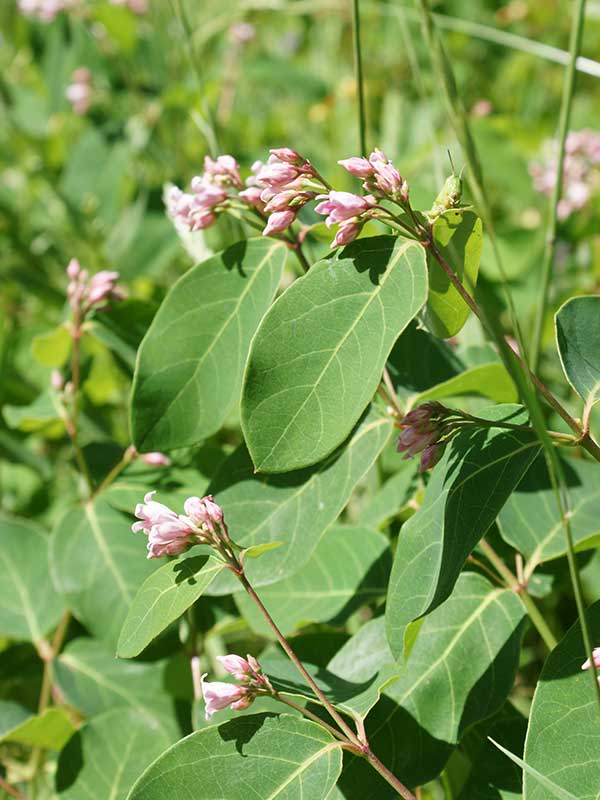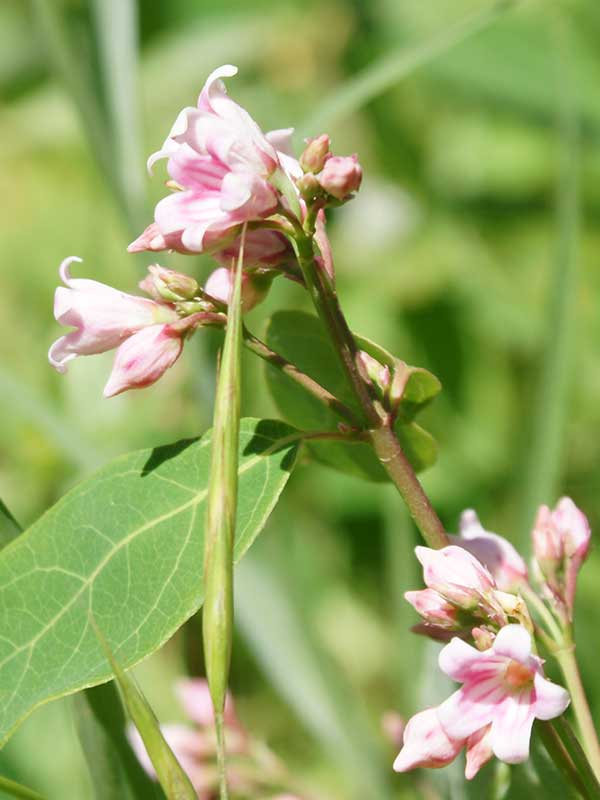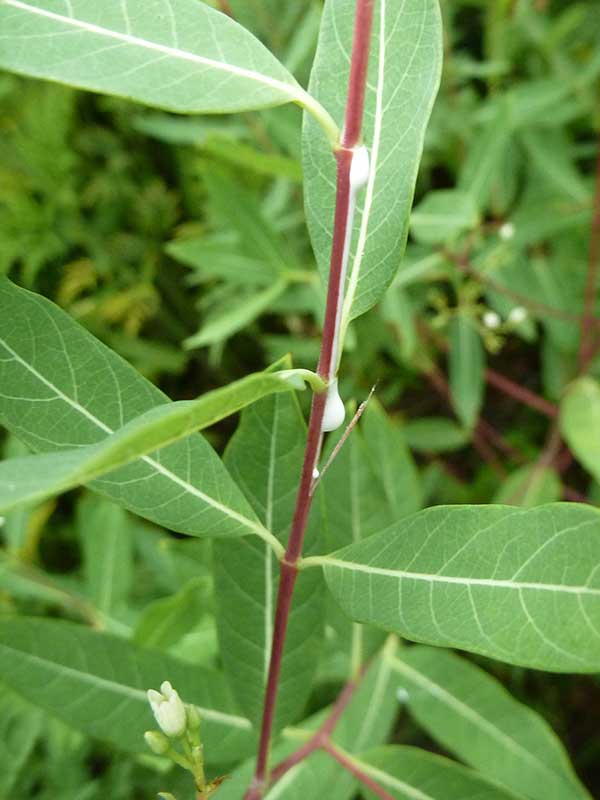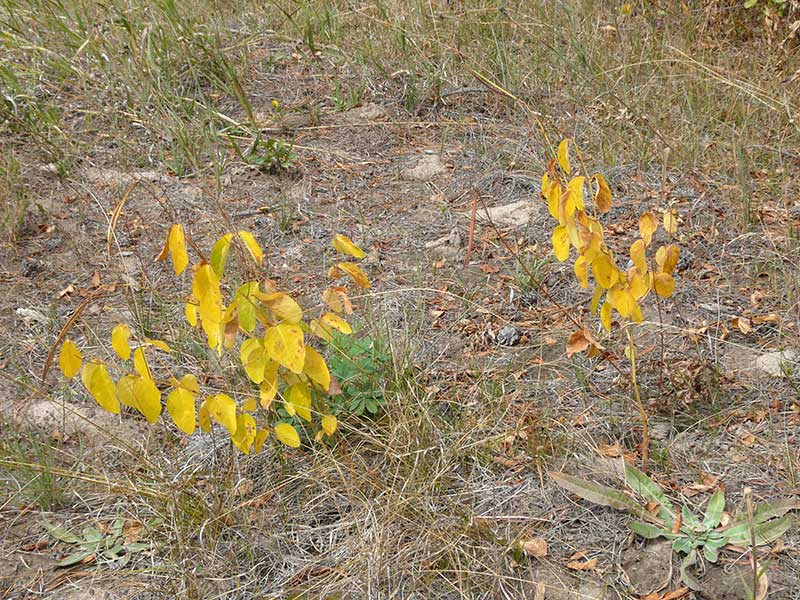Apocynum androsaemifolium / spreading dogbane
-
short and spreading perennial
-
oval leaves with pointed tips, prominent veins
-
clusters of teeny, pink, bell-shaped flowers with recurved petals
-
conspicuous darker pink stripes on inner surface of corolla
- exudes milky sap when stems or leaves are broken
Also known as: flytrap dogbane
See also: Apocynum cannabinum / common dogbane
Spreading dogbane is a low-growing perennial shrub. When in bloom, the beautiful but teeny pink flowers draw your attention. But even when not blooming, the leaves and stems are a pretty good draw, too.
The stems of spreading dogbane are red, and they branch multiple times. This gives the plant as a whole a wide-spreading look. Each branch is lined with opposite and drooping leaves, with quite prominent main and lateral veins and short petioles. The leaves are oval, up to five inches long and two inches wide, and pointed at the tip. The underside of the leaves is hairy, but stems and other parts are not. Look for this in the fall as well as summer… the leaves turn early, and to a brilliant yellow. You may have overlooked the plant in the summer, but it really stands out in September! See the gallery photo.
One of the more diagnostic and notable features of the entire family, and certainly the dogbanes, is the milky sap which appears on broken stems or at the bases of detached leaves. There is a photo of this in the gallery from a different species, A. cannabinum, or common dogbane.
Spreading dogbane flowers are pleasantly fragrant and are held in clusters at the ends of branches. Each is quite small (just over ¼ inch wide), bell-shaped, and light pink or white with darker pink stripes on the inside of the corolla. The petals are “recurving”, i.e. curving back at the tips, and “nodding”, i.e. hanging down. The flowers have a waxy appearance.
Technically, the flowers are on terminal cymes or flat-headed panicles. “Clusters” works well for me.
The flowers produce nectar that is an important food source for insects, in particular, monarch butterflies. The Apocynaceae is the milkweed family, the best known host plant for monarchs.
Dogbane fruits occur as pairs of slender pods ranging from two to six inches long. When ripe, they are a a dull red. The seeds inside the pods have tufts of cottony hairs at the tips, and are, appropriately, wind dispersed. There is no indication of seed banking.
In addition to seed propagation, spreading dogbane, as the name suggests, spreads from underground rhizomes and can form large patches. The rhizomes can go as deep as 10 inches or more in mineral soil. As a clonal species, it is less aggressive in spreading than Apocynum cannabinum (common dogbane)
Spreading dogbane is found in a variety of habitats. It is a component of native plant communities, but also of weedy roadsides and waste areas. You may see it on roadsides, in disturbed areas, in fields, in thickets, as woodland borders, and in other open areas. It is an early colonizer after fire and a common pioneer after disturbance.
Interesting bits – The common name, dogbane, and the genus name, “Apocynum,” meaning “away from dog,” reflect the toxic nature of this plant, and not only to dogs. Other “targets” include you, so don’t eat it. The toxic compounds in the leaves and stems are cardiac glycosides. The roots are also toxic, containing the cardiac stimulant, cymarin. As a result, nothing eats it.
The shape and color of spreading dogbane’s flowers are the key to distinguishing it from its close relative, common dogbane (Apocynum cannabinum). First of all, they are held upright rather than drooping. Second, the flower petals of that species are white, or green-ish or yellow-ish, and don’t curve backward.
Spreading dogbane may not be an actual indicator species, but its flowering and reproductive success are sensitive to ozone pollution.
And finally, spreading dogbane, indeed all dogbanes, have been identified as accumulators of lead to the extent that there is even a 20 year old patent by DuPont that claims it is suitable for bioremediation of lead contaminated soils.
| Color | |
|---|---|
| Family | |
| Blossom size | |
| Inflorescence size | |
| Inflorescence type | |
| When? | |
| Where? |




